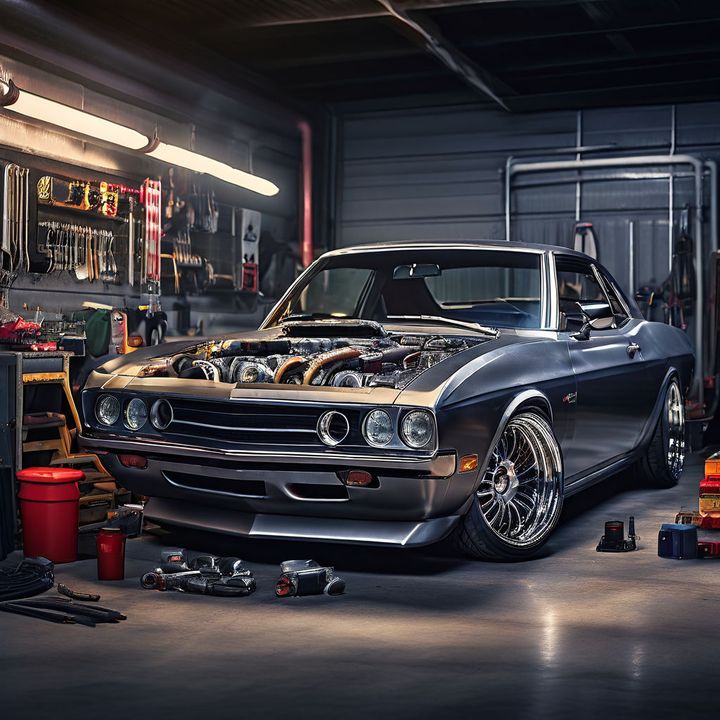


The size of an exhaust system plays a crucial role in the performance and efficiency of an internal combustion engine. While a larger exhaust diameter can potentially increase power output by reducing backpressure, there is a limit beyond which an oversized exhaust can become detrimental. Striking the right balance between exhaust size and engine characteristics is essential for optimal performance.

The exhaust system plays a pivotal role in the overall performance and efficiency of an engine. It's designed to expel the spent gases from the combustion chambers while maintaining an optimal flow velocity and scavenging effect. When the exhaust pipe diameter is too large for the engine's power output, it can lead to a cascade of problems that can significantly impact the vehicle's performance and drivability.
One of the primary reasons for an oversized exhaust system is the installation of aftermarket components that are not properly matched to the engine's specifications. While some enthusiasts may believe that a larger exhaust will enhance performance, the reality is quite different. Let's explore the main causes and consequences of an exhaust size that's too large:
| Cause | Consequence |
|---|---|
| Improper exhaust system sizing | Reduced exhaust gas velocity, leading to poor scavenging of exhaust gases from the cylinders, decreased engine performance and efficiency. |
| Installing an aftermarket exhaust system that is too large in diameter | Increased exhaust gas cooling, disrupting the exhaust pulse timing and reducing low-end torque. |
| Excessive exhaust drone or resonance at certain RPM ranges, creating undesirable cabin noise. |
As a mechanic, I follow a systematic approach to diagnose and identify the root cause of an oversized exhaust system. Here are the steps I typically take:
Performance Evaluation: I start by evaluating the vehicle's performance, paying close attention to any loss of power, especially at low RPMs. This could indicate poor scavenging due to low exhaust gas velocity.
Auditory Inspection: Next, I listen carefully for any excessive exhaust drone or resonance at specific RPM ranges, which can be a clear indicator of an oversized exhaust.
Back-Pressure Testing: To further confirm the issue, I perform a back-pressure test to check if the exhaust system is causing excessive restriction or lack of back-pressure, both of which can be signs of an oversized exhaust.
Visual Inspection: Finally, I visually inspect the exhaust system components, noting the pipe diameters and any signs of improper sizing or fitment.
Once the diagnosis is complete, the next step is to address the issue by repairing or replacing the exhaust system. Here's what this process typically involves:
If the exhaust system is significantly oversized, the most effective solution is to replace it with a properly sized system that matches the engine's power output. This may involve removing the existing components and installing a new, correctly sized system.
| Replacement Components | Description |
|---|---|
| Headers | The exhaust headers collect the exhaust gases from the engine cylinders and direct them into the exhaust system. |
| Catalytic Converters | These components reduce harmful emissions by converting pollutants into less harmful substances. |
| Mufflers | Mufflers are designed to reduce the noise level of the exhaust gases, ensuring a quieter ride. |
| Exhaust Pipes | The exhaust pipes connect the various components of the exhaust system, allowing the flow of exhaust gases. |
During the replacement process, it's crucial to ensure proper alignment, sealing, and the use of appropriate hangers to prevent any leaks or vibrations that could lead to premature wear or damage.
When it comes to exhaust system sizing, I always recommend consulting with exhaust specialists or referring to reputable sources for proper guidelines. This ensures that the replacement system is correctly sized and configured for optimal performance and longevity.

As the saying goes, "an ounce of prevention is worth a pound of cure." To avoid the hassle and potential costs associated with an oversized exhaust system, I recommend the following preventive measures:
Proper Research and Consultation: If you're considering installing an aftermarket exhaust system, do your research and consult with experts to ensure that the system is designed and sized appropriately for your specific engine and power output.
Regular Inspections: Regularly inspect your exhaust system for any signs of damage, leaks, or improper fitment. Catching issues early can prevent them from escalating into more significant problems.
Adhering to Maintenance Schedules: Follow the manufacturer's recommended maintenance schedule for your exhaust system components. Regular maintenance can help identify potential issues before they become major problems.
Addressing an oversized exhaust system can be a costly endeavor, with expenses varying depending on the extent of the work required and the vehicle make and model. Here are some general cost estimates to keep in mind:
| Repair/Replacement | Cost Range |
|---|---|
| Exhaust system replacement (parts and labor) | $500 - $1,500 |
| Muffler or catalytic converter replacement | $100 - $1,000 |
| Exhaust pipe or component replacement | $50 - $500 |
It's important to note that these costs can vary based on factors such as the vehicle type, exhaust system complexity, labor rates in your area, and the quality of the replacement parts. Consulting with a reputable mechanic or exhaust specialist is recommended to obtain an accurate estimate for your specific situation.
In the world of automotive mechanics, an oversized exhaust system can be a significant issue that should not be overlooked. By understanding the causes, consequences, and proper diagnosis and repair methods, you can ensure that your vehicle's exhaust system is functioning optimally, delivering the performance and efficiency you expect.
Remember, prevention is key, and consulting with experts and adhering to proper maintenance schedules can save you from costly repairs down the line. As a mechanic, I'm always happy to share my knowledge and expertise to help fellow enthusiasts keep their vehicles in top shape.
Happy motoring, and may your exhaust system always be the perfect fit!
The main cause is installing aftermarket exhaust components that are too large in diameter for the engine's power output. Improper sizing during replacement can also lead to an oversized exhaust.
It reduces exhaust gas velocity, leading to poor scavenging of exhaust gases from the cylinders and decreased engine efficiency. It can also disrupt exhaust pulse timing, reducing low-end torque.
Common signs include a loss of power at low RPMs, excessive exhaust drone or resonance at certain RPM ranges, and lack of proper back-pressure in the exhaust system.
They evaluate the vehicle's performance, listen for exhaust drone or resonance, perform back-pressure testing, and visually inspect the exhaust components for improper sizing.
The most effective solution is to replace the entire exhaust system with a properly sized one that matches the engine's power output and specifications.
Common replacement components include headers, catalytic converters, mufflers, and exhaust pipes to ensure proper sizing and alignment.
It prevents leaks and vibrations that could lead to premature wear or damage to the new exhaust system components.
Research and consult with experts before installing aftermarket exhaust systems, regularly inspect your existing system, and follow recommended maintenance schedules.
The cost can range from $500 to $1,500 for a complete exhaust system replacement, depending on the vehicle type, exhaust complexity, and labor rates.
Experts and reputable sources can provide proper guidelines to ensure the replacement system is correctly sized and configured for optimal performance and longevity.

Sarah isn't your average gearhead. With a double major in Mechanical Engineering and Automotive Technology, she dived straight into the world of car repair. After 15 years of turning wrenches at dealerships and independent shops, Sarah joined MICDOT to share her expertise and passion for making cars run like new. Her in-depth knowledge and knack for explaining complex issues in simple terms make her a valuable asset to our team.












